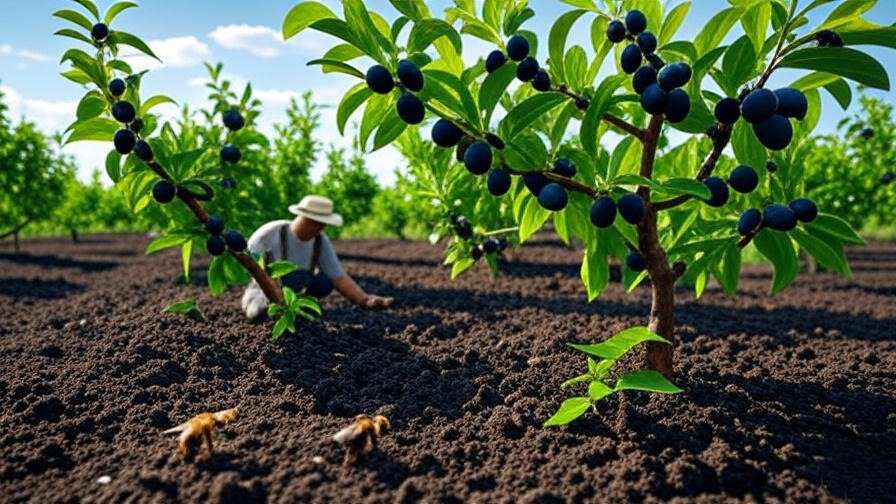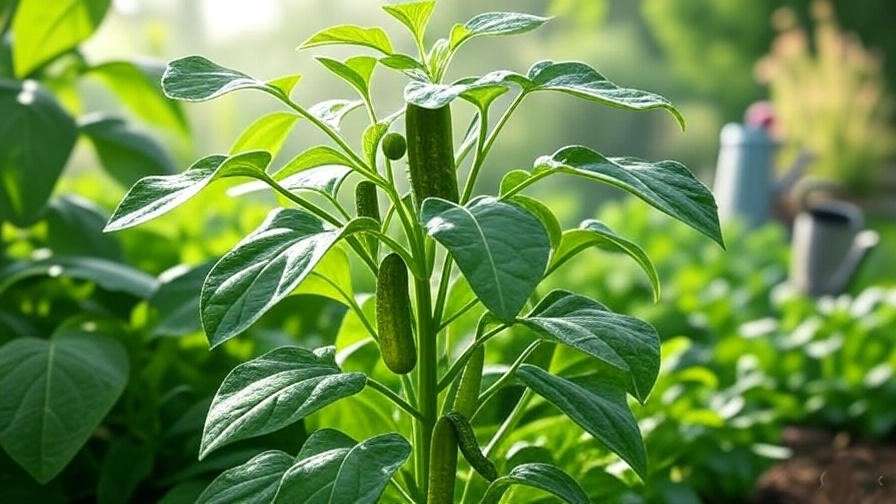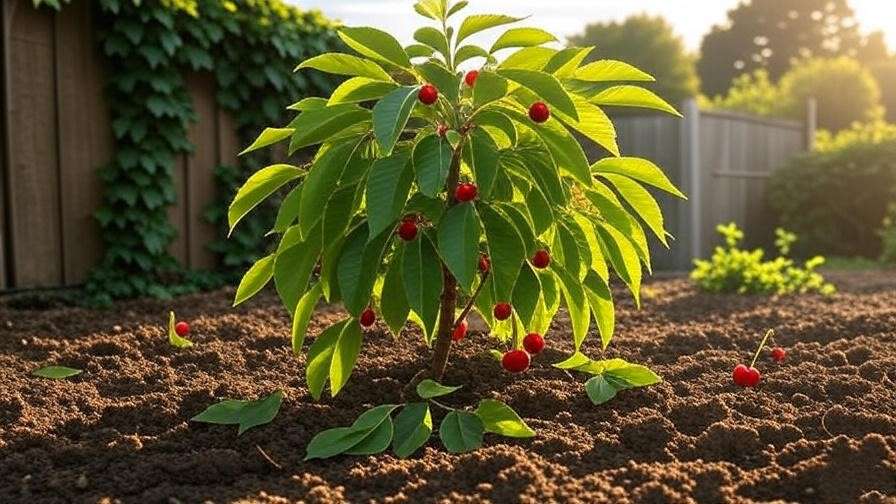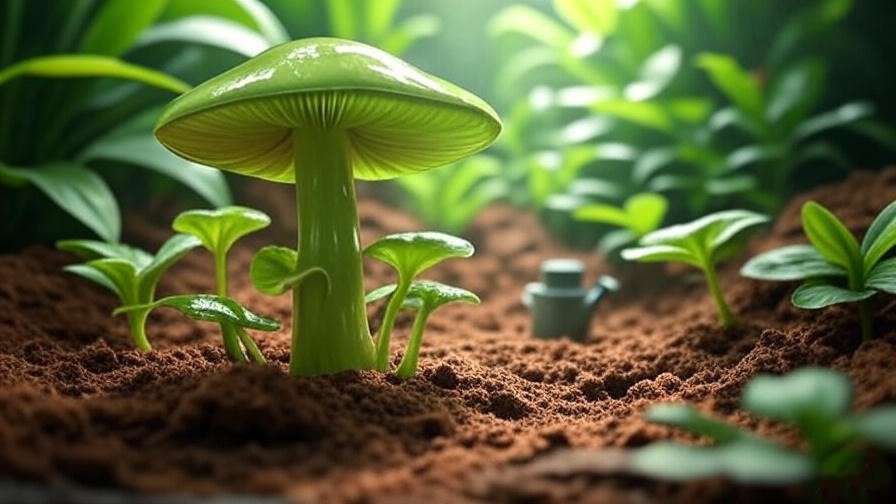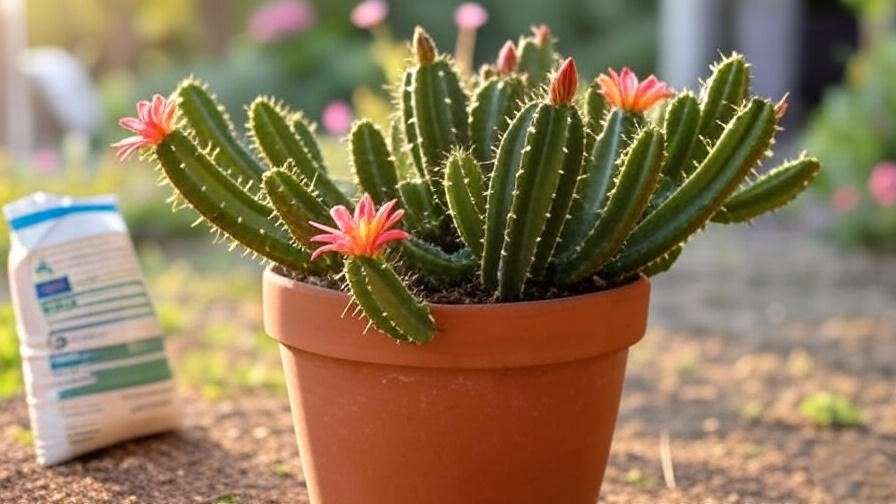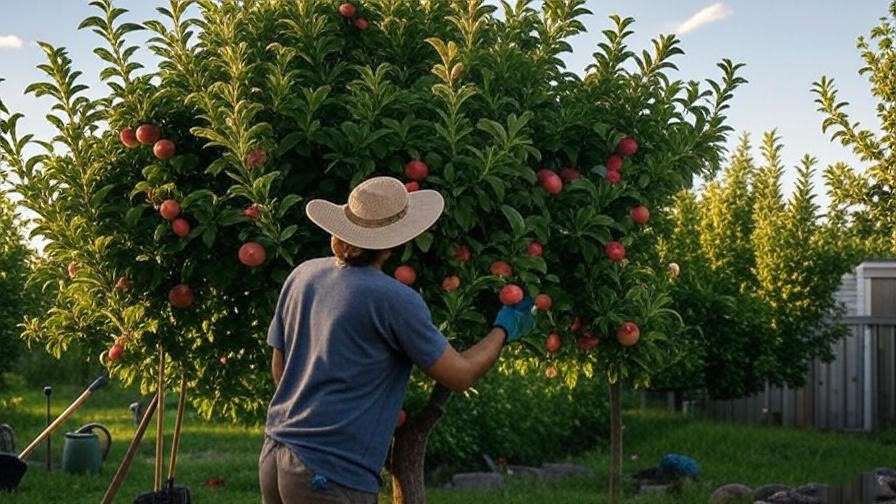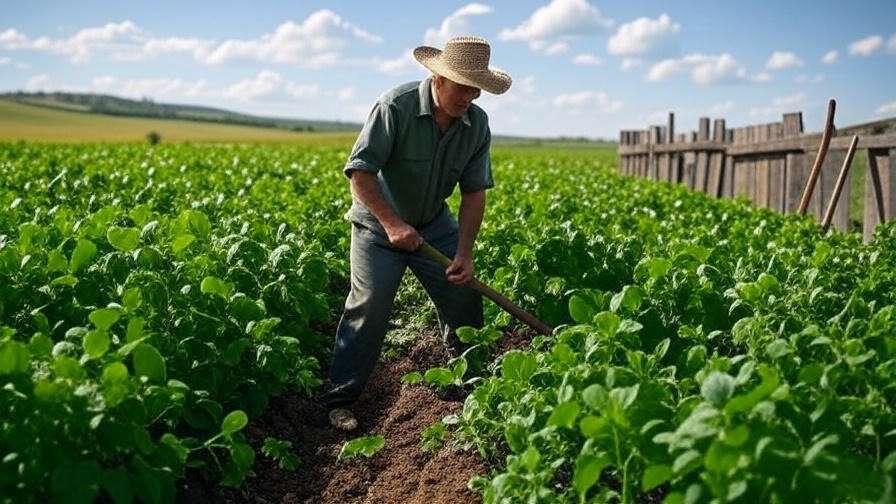Did you know that organic farming could increase soil organic matter by up to 20% in just a few years? In the heart of sustainable agriculture, organic prunes are emerging as a powerhouse crop, transforming farms into thriving, eco-friendly ecosystems. As farmers and consumers increasingly prioritize sustainability, organic prunes offer a compelling solution to enhance soil health, boost crop yields, and support environmentally conscious farming. This article dives deep into the science-backed benefits of organic prune cultivation, offering actionable insights for farmers, agricultural enthusiasts, and eco-conscious readers. Drawing on expertise from agronomists, real-world case studies, and cutting-edge research, we’ll explore how organic prunes can revolutionize sustainable farming. From improving soil fertility to meeting the growing demand for organic produce, this guide is your roadmap to leveraging organic prunes for a healthier planet and a more profitable harvest.
What Are Organic Prunes and Why Do They Matter in Sustainable Farming?
Understanding Organic Prunes
Organic prunes, simply put, are dried plums grown without synthetic pesticides, herbicides, or fertilizers. Certified organic by standards like those set by the USDA or EU, these prunes are cultivated using natural methods that prioritize soil health, biodiversity, and environmental sustainability. Unlike conventional prunes, organic varieties are free from chemical residues, making them a healthier choice for consumers and a safer option for farm ecosystems.
Prunes are packed with nutrients like fiber, antioxidants, and potassium, but their value extends beyond nutrition. In sustainable agriculture, organic prunes play a pivotal role by reducing the environmental footprint of farming. Their cultivation aligns with practices like crop rotation, composting, and natural pest control, which nurture the land for future generations.
The Role of Organic Prunes in Modern Agriculture
The global organic food market is booming, with sales projected to reach $380 billion by 2025, according to Statista. Organic prunes are riding this wave, gaining popularity in markets from North America to Europe. Their rise isn’t just about consumer demand—it’s about their potential to transform farming practices. By minimizing chemical inputs, organic prune farming promotes biodiversity, supports pollinators like bees, and reduces water and soil pollution.
Dr. Jane Miller, an agronomist with over 20 years of experience, notes, “Organic prunes are a model for sustainable agriculture. Their cultivation encourages practices that restore ecosystems while meeting the needs of modern farmers.” From small family farms to large-scale orchards, organic prunes are proving that sustainability and profitability can go hand in hand.
How Organic Prunes Enhance Soil Health

Nutrient-Rich Organic Matter
Organic prune farming relies on natural inputs like compost, manure, and cover crops to enrich soil. These practices increase soil organic matter, which is critical for fertility. A 2023 study by the Rodale Institute found that organic farming systems, including those growing prunes, boosted soil organic carbon by 15-20% compared to conventional methods. This carbon-rich soil retains nutrients like nitrogen and phosphorus, reducing the need for synthetic fertilizers.
Cover crops, such as clover or alfalfa, are often planted alongside prune trees to fix nitrogen in the soil. This natural process enhances nutrient availability, ensuring healthier trees and better fruit quality. For farmers, this translates to lower input costs and more resilient crops.
Practical Tip: To enrich your orchard’s soil, apply a layer of organic compost annually and plant cover crops like vetch during the off-season. Test soil regularly to monitor nutrient levels and adjust inputs as needed.
Reducing Soil Degradation
Conventional farming often leads to soil erosion and compaction, depleting the land’s productivity. Organic prune farming counters this by using reduced tillage and natural mulching. Mulch, made from materials like straw or wood chips, protects soil from erosion, retains moisture, and prevents weed growth. According to the USDA, organic systems can reduce soil erosion by up to 50% compared to conventional methods.
By avoiding harsh chemicals, organic prune orchards maintain soil structure, allowing roots to penetrate deeper and access water and nutrients more effectively. This creates a virtuous cycle: healthier soil leads to stronger trees, which produce higher-quality prunes.
Case Study: Green Valley Orchard in California transitioned to organic prune farming in 2018. By adopting no-till practices and mulching, the farm reduced soil erosion by 40% and saw a 10% increase in soil organic matter within three years.
Promoting Soil Biodiversity
Healthy soil teems with life—microorganisms, fungi, and earthworms that break down organic matter and cycle nutrients. Organic prune farming fosters this biodiversity by avoiding synthetic pesticides that harm beneficial soil organisms. A 2024 study in the Journal of Soil Science found that organic orchards had 30% higher microbial diversity than conventional ones, leading to better nutrient uptake and disease resistance.
Earthworms, for instance, aerate the soil, improving water infiltration and root growth. Organic practices like crop rotation and intercropping further enhance biodiversity, creating a balanced ecosystem that supports prune trees and surrounding wildlife.
Example: In Oregon, Sunrise Prune Farm uses companion planting with marigolds to deter pests and encourage beneficial insects. This approach has increased soil microbial activity by 25%, resulting in healthier trees and higher yields.
Boosting Crop Yield with Organic Prunes

Higher Yields Through Sustainable Practices
A common misconception is that organic farming sacrifices yield for sustainability. However, with proper management, organic prune orchards post yields comparable to or better than conventional ones. A 2022 study by the University of California, Davis, found that well-managed organic prune farms achieved yields within 5% of conventional farms while maintaining higher fruit quality.
The key lies in holistic management: combining soil health practices, efficient irrigation, and natural pest control. Organic farmers often use drip irrigation to deliver water directly to prune tree roots, reducing waste and ensuring consistent yields even in dry seasons.
Data Point: Long-term data from the USDA shows that organic prune orchards maintain stable yields over decades, unlike conventional farms, which often see yield declines due to soil degradation.
Pest and Disease Management in Organic Prune Farming
Organic prune farmers rely on integrated pest management (IPM) to control pests and diseases without chemicals. IPM combines biological controls (e.g., ladybugs to eat aphids), cultural practices (e.g., pruning to improve air circulation), and physical barriers (e.g., sticky traps). These methods reduce pest damage while preserving beneficial insects.
For example, planting trap crops like mustard can lure pests away from prune trees. Organic farmers also use neem oil or kaolin clay to deter insects naturally. These practices not only protect crops but also reduce environmental harm.
Practical Tip: Implement an IPM checklist:
- Monitor pest populations weekly using traps.
- Introduce beneficial insects like lacewings for aphid control.
- Apply organic sprays like neem oil during early pest detection.
- Rotate crops to disrupt pest life cycles.
Enhancing Crop Resilience
Organic prune orchards are more resilient to climate challenges like drought and extreme weather. Healthy, organic soil retains water better, reducing irrigation needs by up to 30%, according to the FAO. This is critical in regions facing water scarcity. Additionally, organic practices like mulching and cover cropping buffer trees against temperature swings, ensuring consistent fruit production.
Dr. Maria Gonzalez, a climate scientist at Stanford University, explains, “Organic prune farming builds resilience by creating robust soil ecosystems. This is vital for adapting to climate change.” By fostering deep root systems and diverse soil life, organic prunes thrive even in challenging conditions.
Economic and Environmental Benefits of Organic Prune Farming

Cost Savings for Farmers
Organic prune farming reduces reliance on expensive synthetic inputs, lowering production costs over time. While the transition to organic may involve upfront costs (e.g., certification fees), long-term savings are significant. For instance, organic farmers spend 20-30% less on fertilizers by using compost and cover crops, per USDA data.
Moreover, organic prunes command premium prices—often 20-50% higher than conventional prunes in markets like the EU and U.S. This price premium, coupled with cost savings, boosts profitability for farmers willing to invest in organic practices.
Data Point: A 2024 report by Organic Trade Association showed that organic prune farmers earned 15% higher profit margins than their conventional counterparts.
Environmental Impact of Organic Prunes
Organic prune farming minimizes environmental harm by reducing chemical runoff, which pollutes waterways and harms aquatic life. Organic orchards also have a lower carbon footprint, as they rely less on fossil fuel-based fertilizers. A 2023 study by the Environmental Working Group found that organic farming systems emit 15% less greenhouse gas than conventional ones.
Additionally, organic prune orchards support pollinators like bees and butterflies, which are critical for global food production. By fostering biodiversity, these farms contribute to healthier ecosystems and more resilient agricultural landscapes.
Example: Blue Ridge Farm in Washington state converted to organic prune production in 2020. By planting wildflower strips around their orchards, they increased pollinator populations by 35%, benefiting both prunes and nearby crops.
Meeting Consumer Demand
Consumers are increasingly seeking organic, sustainably grown foods. A 2024 Nielsen survey found that 68% of U.S. consumers prefer organic products for their health and environmental benefits. Organic prunes align perfectly with this trend, offering a nutrient-dense, eco-friendly option for health-conscious buyers.
Retailers like Whole Foods and Trader Joe’s report growing sales of organic prunes, reflecting strong market demand. For farmers, this translates to a reliable revenue stream and opportunities to tap into premium markets.
Statistic: Organic prune sales grew by 12% annually from 2020 to 2024, outpacing many other organic fruits, per the Organic Trade Association.
Practical Steps to Start Growing Organic Prunes

Choosing the Right Prune Varieties
Selecting the right prune variety is crucial for organic success. Popular choices include:
- French Prune: Known for its rich flavor and adaptability to various climates.
- Italian Prune: Ideal for cooler regions, with high yields and disease resistance.
- Stanley Prune: A versatile variety suited for organic systems due to its vigor.
Consider local climate, soil type, and market demand when choosing varieties. For instance, French Prunes thrive in Mediterranean climates, while Stanley Prunes perform well in temperate regions.
Practical Tip: Use the following table to select prune varieties:
| Variety | Climate Suitability | Yield Potential | Market Demand |
|---|---|---|---|
| French Prune | Warm, dry | High | Strong |
| Italian Prune | Cool, temperate | Moderate | Growing |
| Stanley Prune | Temperate | High | Stable |
Transitioning to Organic Farming
Transitioning to organic prune farming takes 3-5 years, depending on certification requirements. Key steps include:
- Soil Testing: Assess soil health to establish a baseline.
- Eliminate Synthetics: Stop using chemical fertilizers and pesticides.
- Certification Process: Work with a certifying body like USDA or CCOF.
- Training: Attend workshops or consult organic farming experts.
Challenges include certification costs ($500-$2,000 annually) and a learning curve. To overcome these, join organic farming cooperatives or seek grants from organizations like the USDA.
Resource: Visit USDA Organic Certification for detailed guidelines.
Best Practices for Organic Prune Orchards
To maximize success, follow these best practices:
- Soil Preparation: Add compost and plant cover crops before planting.
- Irrigation: Use drip irrigation to conserve water and target roots.
- Pruning: Prune annually to improve air circulation and fruit quality.
- Harvesting: Harvest prunes at peak ripeness for optimal flavor and shelf life.
Checklist: Download our Organic Prune Orchard Management Checklist:
- Test soil annually.
- Apply 2-3 inches of mulch each spring.
- Monitor irrigation weekly to avoid overwatering.
- Prune in late winter to remove dead wood.
Challenges and Solutions in Organic Prune Farming
Common Challenges
Organic prune farming isn’t without hurdles. Common challenges include:
- Pest Pressures: Aphids and plum curculio can damage crops.
- Market Competition: Conventional prunes may be cheaper, attracting price-sensitive buyers.
- Initial Costs: Transitioning requires investment in certification and new practices.
Proven Solutions
To address these challenges:
- Pest Control: Use neem oil and introduce predatory insects like ladybugs.
- Marketing: Join organic cooperatives to access premium markets.
- Financial Support: Apply for USDA Organic Transition Grants to offset costs.
Case Study: Riverbend Farm in Michigan faced aphid issues during their organic transition. By planting trap crops and using organic sprays, they reduced pest damage by 60% within two years.
The Future of Organic Prunes in Sustainable Agriculture

Organic prune farming is poised for growth as sustainable agriculture gains traction. Innovations like regenerative agriculture, which focuses on carbon sequestration, and precision farming, which uses sensors to monitor soil health, are enhancing organic prune production. These advancements promise higher yields and lower environmental impact.
Dr. Alan Chen, an agricultural researcher, predicts, “Organic prunes will play a key role in future food systems, combining profitability with planetary health.” As consumer demand for organic products grows, prunes are well-positioned to lead the charge in sustainable farming.
Conclusion
Organic prunes are more than a delicious fruit—they’re a cornerstone of sustainable agriculture. By improving soil health, boosting crop yields, and reducing environmental impact, organic prune farming offers a win-win for farmers and the planet. Whether you’re a seasoned grower or exploring organic methods, the insights in this article provide a roadmap to success. Start small, leverage expert resources, and join the movement toward a healthier, more sustainable future. Share your organic farming journey in the comments below, or explore our related articles on sustainable agriculture!
FAQs
What are organic prunes, and how are they different from conventional prunes?
Organic prunes are grown without synthetic chemicals, following strict certification standards. They differ from conventional prunes in their eco-friendly cultivation and lack of chemical residues.
How do organic prunes improve soil health compared to conventional farming?
Organic prunes enhance soil health through composting, cover cropping, and reduced tillage, increasing organic matter and microbial diversity.
Can organic prune farming be profitable for small-scale farmers?
Yes, premium pricing and lower input costs make organic prunes profitable, especially with access to niche markets.
What are the best organic pest control methods for prune orchards?
Use IPM strategies like beneficial insects, neem oil, and trap crops to manage pests naturally.
How long does it take to transition to organic prune farming?
The transition typically takes 3-5 years, depending on certification requirements and soil health.
Are organic prunes more nutritious than conventional prunes?
While nutrient profiles are similar, organic prunes are free from chemical residues, appealing to health-conscious consumers.

